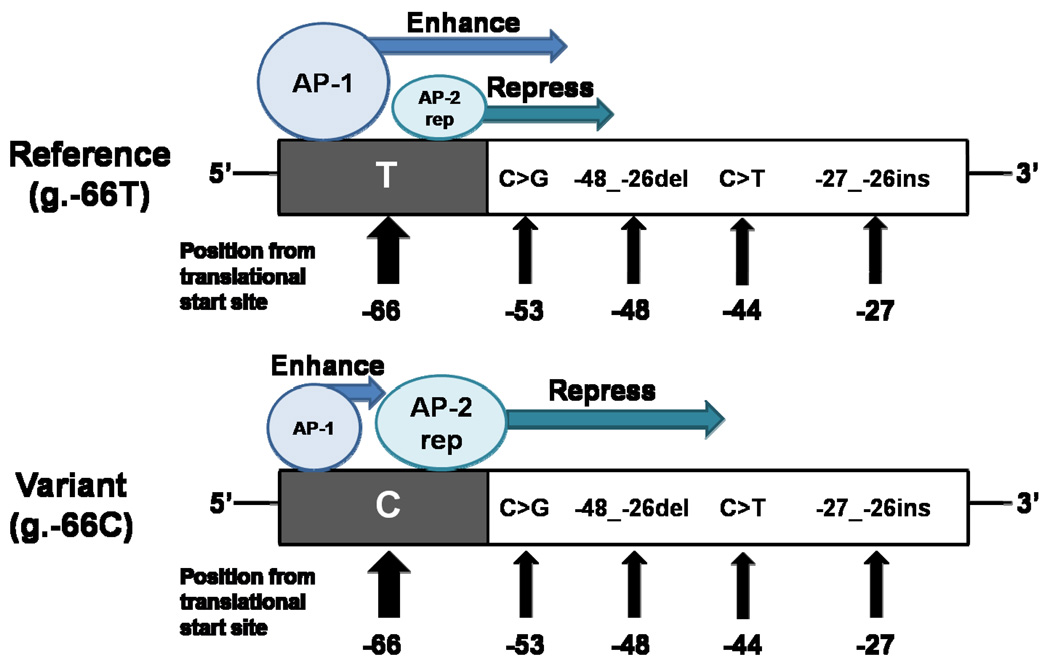Figure 7.
Schematic of the interaction of the MATE1 promoter with two transcription factors that are proposed to be involved in the regulation of MATE1. The upper drawing shows the binding of the transcription factors to the reference allele and the lower drawing shows the binding to g.−66T>C. The transcription factors, AP-1 and AP-2rep, can bind with the site containing the variant, g.−66T>C, competitively. AP-1 works as an enhancer of MATE1 transcription while AP-2rep represses MATE1 transcription. The relative sizes of AP-1 and AP-2rep depict the relative binding affinity with this region; AP-1 has a higher binding affinity for the g.−66T allele whereas AP-2rep has a higher binding affinity for the g.−66C allele. Promoter polymorphisms of MATE1 identified in this study are included in the schematic. Their positions are based upon the translational start site.

